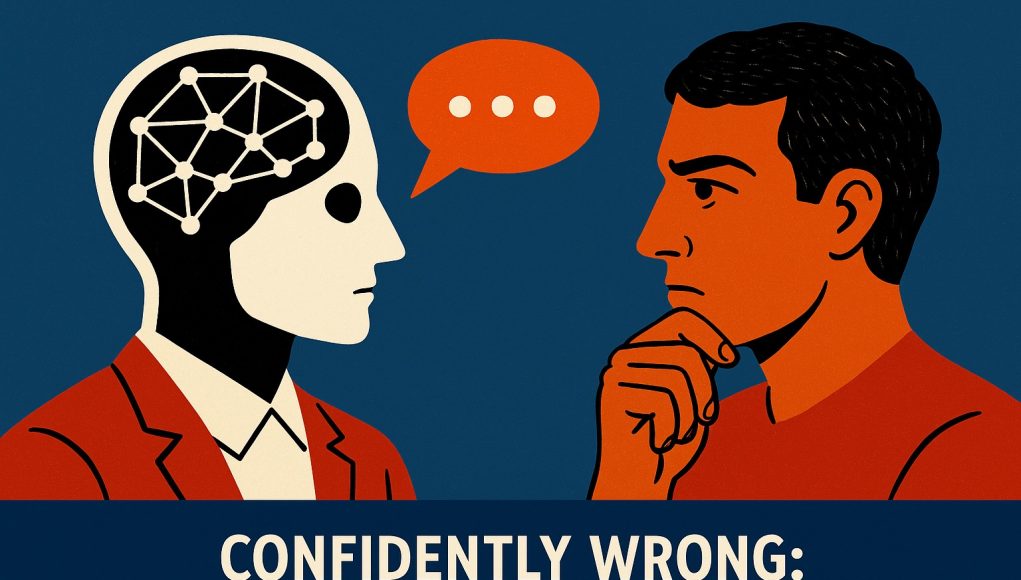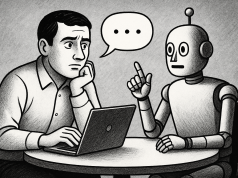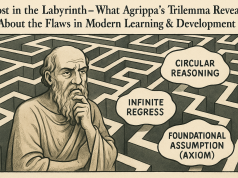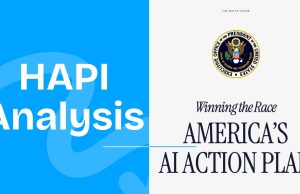In every age, we’ve built tools that mirror us more than we realize. The printing press amplified our words, the telescope extended our sight, and now language models echo our thinking—confident, fluent, and sometimes gloriously wrong. Their so-called “hallucinations” are not the fever dreams of machines but the logical outcome of how we train and reward them. We ask them to perform like students under exam pressure, where the prize goes not to the cautious but to the bold guesser. And so, like us, they learn to bluff when uncertain.
But here’s the twist: these machines are not just reflecting our intelligence—they’re holding up a mirror to our own blind spots. When we watch them conjure answers out of thin air, we’re also watching a reflection of the boardrooms that reward confident speeches, the classrooms that punish “I don’t know,” and the cultures that confuse certainty with wisdom. To study why machines hallucinate is, in many ways, to study ourselves: how we learn, how we lead, and how we sometimes stumble in our pursuit of truth.
The Test-Taking Machine: Why AI Hallucinates (and How Better Grading Can Make It Honest)
The Confident Student Problem
Every classroom had that one student. You know the type. The hand shot up before the teacher finished asking the question. The answer? Delivered with the swagger of absolute certainty. And then, inevitably, spectacularly wrong.
Now imagine scaling that student to 600 billion parameters and hooking them up to the internet. Congratulations—you have today’s large language models.
Researchers call this habit hallucination. I prefer the less mystical phrase: confident bluffing. And as a new paper by Kalai and colleagues (Why Language Models Hallucinate, 2025) reminds us, it’s not a bug. It’s the system working exactly as designed.
https://openai.com/index/why-language-models-hallucinate
Hallucinations, Demystified
First, let’s clear the fog. When we say AI hallucinates, we don’t mean it’s seeing pink elephants or hearing phantom voices. In machine terms, a hallucination is a plausible but false statement.
Ask for a scholar’s dissertation title, and you may get a convincingly worded—but entirely fabricated—response. Ask it to count the Ds in “DEEPSEEK,” and you’ll receive answers ranging anywhere from 1 to 7. All plausible, none correct.
This isn’t nonsense. It’s not the machine babbling. It’s the machine playing the only game we taught it: guess, and guess with confidence.
Why Do Machines Bluff?
Here’s the dry truth: hallucinations are the predictable outcome of math and incentives.
- Pretraining (the foundation). A model learns the statistical patterns of text. Even if the training data were perfect, the model would still misfire because language is messy. It faces the “Is-It-Valid” challenge: for every possible response, decide if it’s valid or an error. Spoiler: no model can sort perfectly. And when it misses, out comes a hallucination.
- Singletons (the lonely facts). Think of obscure trivia—say, a person’s birthday that appears once in the training data. There’s no pattern to learn, no redundancy to anchor it. The paper shows that the fraction of such one-off facts (“singleton rate”) sets a hard lower bound on how often the model will hallucinate. No amount of wishful prompting will change that.
- Post-training (the bluffing school). Here’s the kicker: after pretraining, we fine-tune models with benchmarks that punish hesitation. On most tests, saying “I don’t know” earns you zero. A wrong but confident guess? At least you’ve got a shot. The rational strategy is always to bluff. So that’s what the machine does. Endlessly. Relentlessly. Just like that overconfident student.
The Wrong Kind of Evolution
Nature has a simple punishment for bluffing: you guess wrong, you don’t survive. The gazelle doesn’t tell the lion, “Actually, I think you might be vegetarian.” But in our digital ecosystems, we’ve inverted the rules. We’ve built leaderboards and benchmarks that reward performance over prudence, speed over humility.
The result? We’ve trained our machines to be expert test-takers, not reliable truth-tellers. They are overfit not just to language, but to the warped incentives of our grading systems.
The Fix Is Simpler Than You Think
The authors propose a refreshingly simple remedy: change the grading system.
Instead of binary scoring (1 point for right, 0 for wrong or abstain), give partial credit for honesty. Here’s the formula:
- Answer only if you’re more than t confident.
- If wrong, lose t/(1–t) points.
- If right, get 1 point.
- If unsure, say “I don’t know” for 0 points.
At t = 0.75, a wrong answer costs you 2 points. Suddenly, guessing is punished. The rational strategy shifts: bluff less, calibrate more.
It’s the same trick human exams like the SAT once used, penalizing wrong guesses to separate the humble from the reckless. The machine, like the student, adapts to whatever scoring we set.
Why This Matters Beyond AI
This isn’t just about machines. It’s about us.
We live in a culture that too often mistakes confidence for competence. Smooth talk passes for smart talk. Benchmarks reward volume over nuance, certainty over reflection. And just like the models, we adapt—bluffing when unsure, masking ignorance with performance.
The paper is a mirror. It shows that hallucinations aren’t strange computer glitches—they’re what happens when intelligent systems (silicon or biological) are trapped in warped incentive games.
So What Do We Do?
If we want trustworthy AI, we need to reward honesty. If we want trustworthy humans, we need to do the same. That means:
- Designing evaluations that value uncertainty. In AI and in people.
- Building cultural safety for “I don’t know.” In workplaces, schools, communities.
- Tracking calibration, not just accuracy. Did you know when you didn’t know? That’s the real score.
Closing: The Return of the Confident Student
So let’s return to that student in the classroom. Imagine if the teacher said: “You only get credit if you’re sure. Otherwise, say ‘I don’t know’ and I’ll respect that.” How quickly would our classrooms change? How quickly would our boardrooms change? How quickly would our machines change?
AI hallucinations aren’t alien. They’re human. They’re a reflection of us. If we want machines that are humble, calibrated, and trustworthy—maybe we should start by building a culture that rewards those qualities in ourselves.
Because in the end, the problem isn’t that the machine is bluffing. The problem is that we taught it to.
👉 Call to Action: At TAO.ai, we’re exploring how to design communities, metrics, and technologies that reward honesty, humility, and collective intelligence. Join us as we test new “confidence-aware” evaluations in our AnalyticsClub challenges. Let’s see what happens when we stop rewarding bluffing—and start rewarding truth.
Humble Intelligence: What Our Brains Can Learn from Bluffing Machines
The Gazelle Doesn’t Bluff
In the savannah, a gazelle does not bluff a lion. If it guesses wrong, there’s no retake. Yet in human habitats—schools, workplaces, even social media—bluffing is strangely rewarded. We nod to the confident speaker, even if they’re confidently wrong.
And now, our machines are doing the same. Why? Because we built their report cards.
The recent Why Language Models Hallucinate paper reveals a sobering truth: AI hallucinates not because it’s broken, but because our systems reward confident answers over honest uncertainty. The machine is simply mirroring us.
So here’s the real question: What can our brains learn from our bluffing machines?
Lesson 1: Confidence Is Not Competence
AI’s biggest failing is also humanity’s favorite bias: equating certainty with truth.
Language models score higher when they guess confidently, even if wrong. Humans? We do the same. The person with the loudest voice in the room often shapes decisions, regardless of accuracy.
The lesson is clear: just because something is said fluently, doesn’t make it fact. We need to train ourselves—individually and collectively—to separate style from substance.
Lesson 2: Make Space for “I Don’t Know”
Machines avoid “I don’t know” because benchmarks punish it. People avoid it because culture punishes it.
Imagine if in a meeting, saying “I don’t know, but I’ll find out” earned as much credit as giving a half-baked confident answer. That small redesign would change how teams learn. It would normalize humility, and paradoxically, speed up progress—because we’d stop chasing the wrong paths so confidently.
In other words: abstention is not weakness. It’s wisdom.
Lesson 3: Respect the Singleton
In machine learning, a singleton is a fact seen only once in training—an obscure birthday, a rare law, a unique case. These are exactly where hallucinations spike.
In human learning, we have our own singletons: first-time challenges, new markets, unprecedented crises. Yet instead of slowing down, we often speed up—confidently winging it.
The takeaway? Treat new, rare situations with care. Pair up. Research harder. Call the mentor. The brain’s singleton rate is high enough already; no need to bluff through it.
Lesson 4: Know Your Model Limits
Machines hallucinate when their internal models don’t fit reality—like tokenizing “DEEPSEEK” into chunks that make counting Ds nearly impossible.
Humans hallucinate too, but we call it “bad assumptions.” When we use the wrong mental model, we miscount, misinterpret, and mislead ourselves.
The lesson: upgrade the model, not just the willpower. Read widely. Reframe problems. Don’t be the trigram model in a world that requires deeper reasoning.
Lesson 5: Redesign the Grading
Ultimately, hallucinations—human or machine—are about incentives. If bluffing earns more points than honesty, bluffing becomes rational.
The paper proposes a fix for AI: scoring systems that penalize wrong guesses more than abstentions. Humans could use the same. Imagine performance reviews that reward calibrated honesty over overconfident error. Imagine classrooms where students earn points for saying “I’m not sure, here’s my reasoning”.
We don’t need to teach people (or machines) to be less human. We need to redesign the exam.
The Worker1 Playbook: Practicing Humble Intelligence
So how do we apply this in daily life, as individuals and teams?
- Set thresholds. Decide your personal “confidence t.” For a business decision, maybe 90%. For a brainstorm, 60%.
- Practice IDK rituals. Try this script: “Tentative take (70%): … I’ll confirm by Friday.” Simple, safe, clear.
- Track calibration. Journal predictions and outcomes. Over time, you’ll learn if you’re an under-confident sage or an overconfident bluffer.
- Singleton protocol. For new, rare tasks: pause, research, collaborate. Treat them as high-risk zones.
- Make humility visible. In teams, celebrate the person who flags uncertainty, not just the one who speaks first.
What This Means for Communities
Strong workers build strong communities. Strong communities nurture strong workers. But only if those communities value honesty as much as output.
At AnalyticsClub, we’re experimenting with challenges that reward not just accuracy but calibration—did you know when you didn’t know? At Ashr.am, we’re building spaces where workers can exhale, say “I don’t know,” and find support instead of stress. Through the HumanPotentialIndex, we’re exploring ways to measure not just skill, but wisdom: the courage to pause, to question, to admit uncertainty.
This isn’t just about building smarter machines. It’s about building wiser humans.
Closing: Gazelles, Lions, and Leaders
Back to the gazelle. In the savannah, bluffing is fatal. In our modern world, bluffing can win you promotions, followers, and funding. But it also corrodes trust, slows learning, and eventually collapses communities.
Our machines are showing us a mirror: they bluff because we do. If we want AI to be humble, we must first cultivate humility ourselves.
Because in the end, the most powerful intelligence—human or machine—isn’t the kind that always has an answer. It’s the kind that knows when not to.
👉 Call to Action: Join us in rethinking how we learn, lead, and build together. What if our teams and technologies were rewarded for humility as much as for output? At TAO.ai, that’s the future we’re working toward. Come be part of the experiment.
In the end, the story of hallucinating machines is not about machines at all—it is about us. We built systems that reward performance over humility, and they learned our lesson a little too well. If we want AI that is trustworthy, we must design for honesty, not bravado. And if we want communities that are resilient, we must celebrate curiosity over certainty, calibration over bluffing.
The gazelle survives not by pretending to know the lion’s next move, but by respecting uncertainty and reacting wisely. Perhaps our greatest intelligence—human or artificial—will not be measured by the answers we give, but by the courage to admit when we don’t know, and the wisdom to learn what comes next.
So here is the challenge before us: to reimagine our tests, our workplaces, and our conversations in ways that reward truth-telling and humility. Because if we can teach our machines to be honest, maybe we’ll remember how to be honest with ourselves.

























